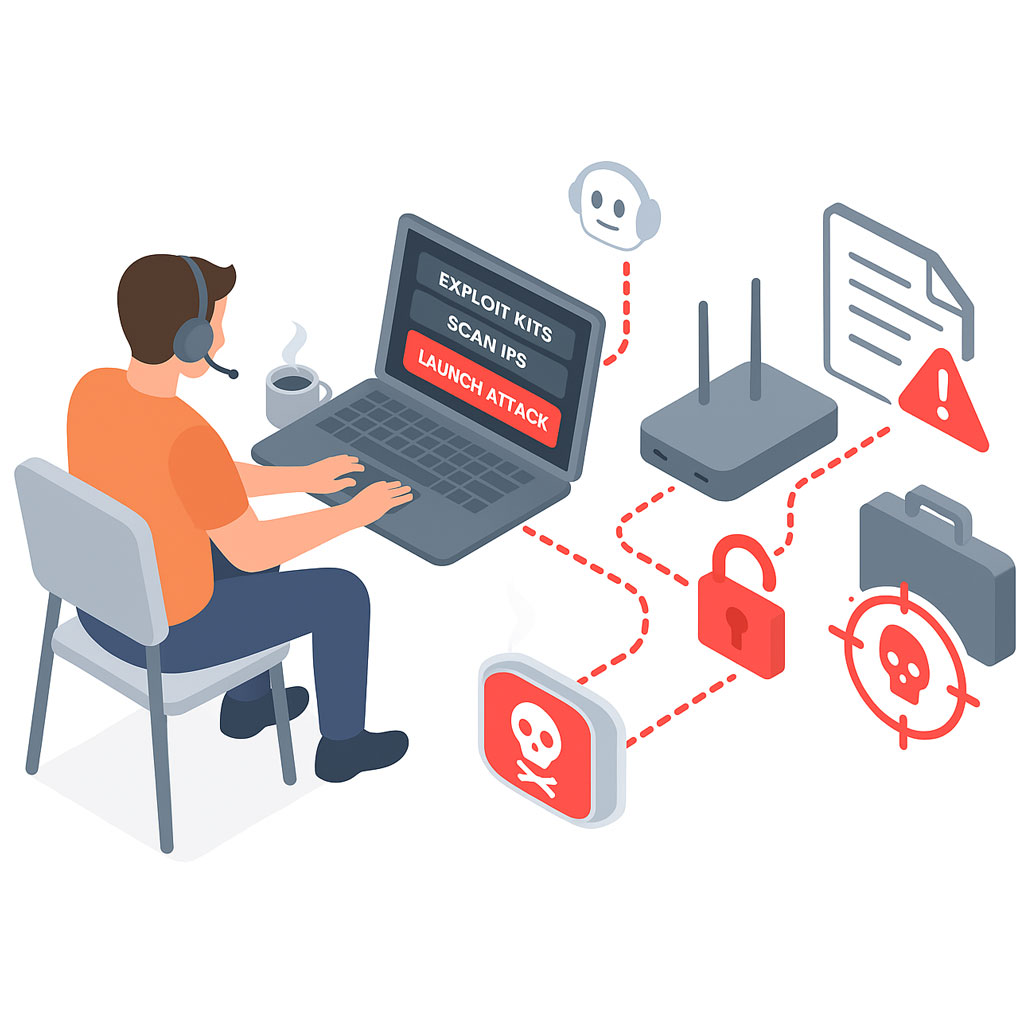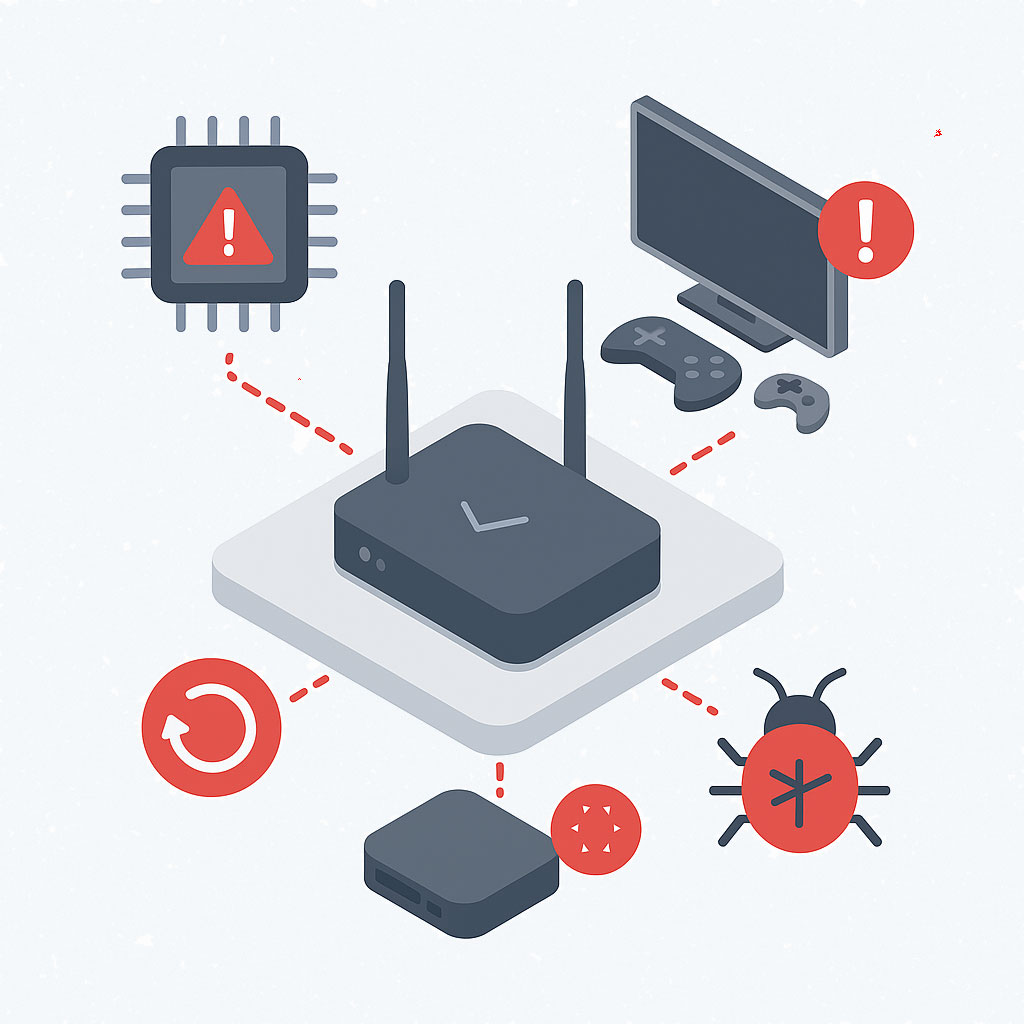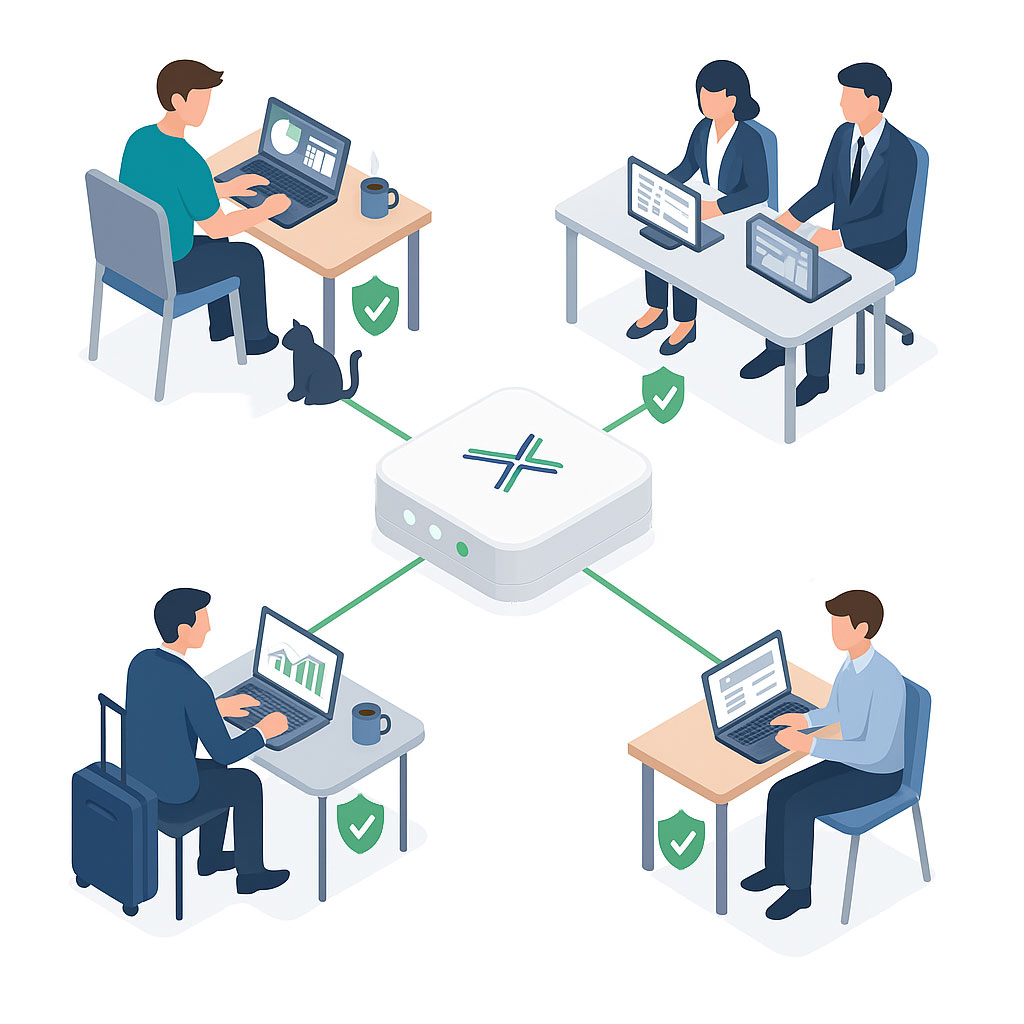

Defence
Defence suppliers operate in a complex and high-stakes environment. Whether supporting classified programmes, working under export controls, or maintaining critical infrastructure contracts, your systems must uphold the highest standards of security, even outside your main facilities.
From engineers accessing secure documentation at home to technicians working on-site at customer or partner locations, today’s defence supply chain relies on connectivity that often falls outside direct IT control. This is the uncontrolled network edge, the point where your defences are no longer under your organisation’s full command.
And it’s one of the most common weak spots in modern security architectures.
Loxada helps you take control by delivering a secure, managed network edge, purpose-built for environments where supply chain trust, firmware transparency, and connectivity integrity can’t be left to chance.
The Evolving Threat: Hacking as a Commodity
Defence suppliers aren’t just facing opportunistic hackers, they’re facing an ecosystem. Modern cybercrime operates as a service, with Hacking-as-a-Service (HaaS) platforms and AI-enabled tooling making it easier than ever for attackers to scale up.
What used to require deep expertise can now be executed by anyone with a wallet and intent. This shift means:
- Attackers can buy or rent compromised infrastructure to observe your data flows
- Automated scripts can scan the internet for vulnerable firmware signatures
- Fake networks can intercept VPN credentials or redirect DNS queries
- Even basic routers at staff homes can become an unmonitored access point
For defence suppliers, this makes the uncontrolled network edge not just a technical risk, but a strategic one. Your firewall is no longer the front line. The connection from a laptop in a shared office or from a subcontractor’s flat can be where the breach starts.


Why Network Integrity Matters to Defence Suppliers
Standard routers and access points are not designed to meet the operational and compliance standards that apply to defence-sector work. Yet many suppliers still rely on consumer-grade or unmanaged business devices in off-site or flexible working scenarios.
These devices can:
- Include undocumented services or embedded vendor backdoors
- Contain unvetted third-party firmware libraries, often never reviewed or patched
- Allow factory resets that return them to insecure defaults
- Accept software updates that often contain known vulnerabilities
For companies working in sensitive or restricted programmes, this represents more than a theoretical concern. In some cases, it may breach export control frameworks or fail internal client audits. In others, it creates real operational risk, especially if devices are targeted by nation-state actors or third-party attackers looking to exploit firmware-level vulnerabilities.
This isn’t speculation. Multiple agencies, including the NSA, NCSC, and CISA, have issued specific guidance on hardening the network edge. The NSA’s 2023 publication on edge device security explicitly warns that routers and similar devices are now primary entry points for sophisticated adversaries, and that organisations must assume these risks extend beyond corporate firewalls.
Loxada: A Known-Good Network Edge
Loxada gives you back control. Our fully managed routers are built to eliminate uncertainty and enforce a verifiable security baseline.
Loxada’s hardened operating environment has been designed from the ground up for security. Devices then connect only via our secure, always-on VPN tunnel and pull updates from our centrally managed infrastructure.
Key protections include:
- Loxada’s proprietary secure firmware
- Cryptographically verified updates delivered over secure channels
- Rollback protection, ensuring devices can’t be reverted to compromised states
- Threat intelligence-based blocking, filtering malicious domains at the DNS layer
- No need for local configuration or third-party tools; everything is centrally managed
This ensures that even in unfamiliar locations or partner facilities, your staff are connecting from a network you control, built on infrastructure you trust.


Flexible Deployment for Critical Teams
We’ve designed Loxada to be deployable wherever secure work happens. Whether you’re expanding a classified programme, supporting client infrastructure off-site, or working under strict compartmentalisation rules, Loxada can provide a trusted edge.
Deployment examples include:
- Secure home environments for senior engineers, compliance officers, or project leads
- Customer or partner sites where IT infrastructure is shared or third-party controlled
- Field exercises or test deployments with limited or no fixed networking
- Pop-up labs or satellite offices, often with short-term or contract-based IT support
- Subcontractors who need secure access into shared systems without full infrastructure access
In all cases, Loxada helps extend your secure perimeter, without the need for large IT teams or expensive security appliances.
Why Defence Suppliers Choose Loxada
- Secures sensitive access across distributed teams, partner sites, and remote environments
- Reduces risk at the network edge, where control and visibility are lowest
- Supports compliance with DEFCON 658, JSP 604, and NCSC supply chain cybersecurity guidance
- Aligns with ENISA and NCSC recommendations on firmware integrity, edge device protection, and secure remote access
- Deploys quickly, with no specialised hardware or user configuration required
Loxada provides your organisation with a clear, auditable way to extend network trust, even in environments outside your direct control.
Whether you’re handling controlled unclassified information (CUI), defence export data, or proprietary IP, Loxada helps ensure the connection is as secure as the content.
